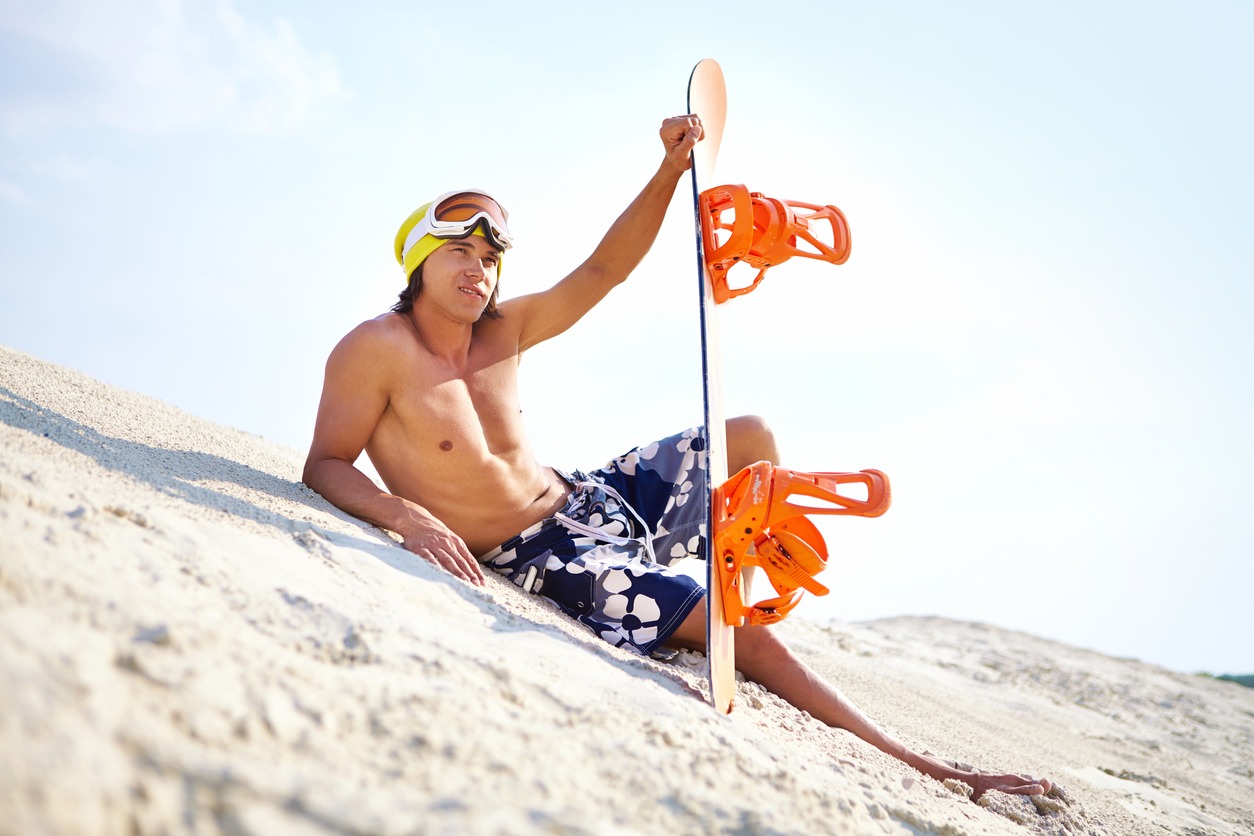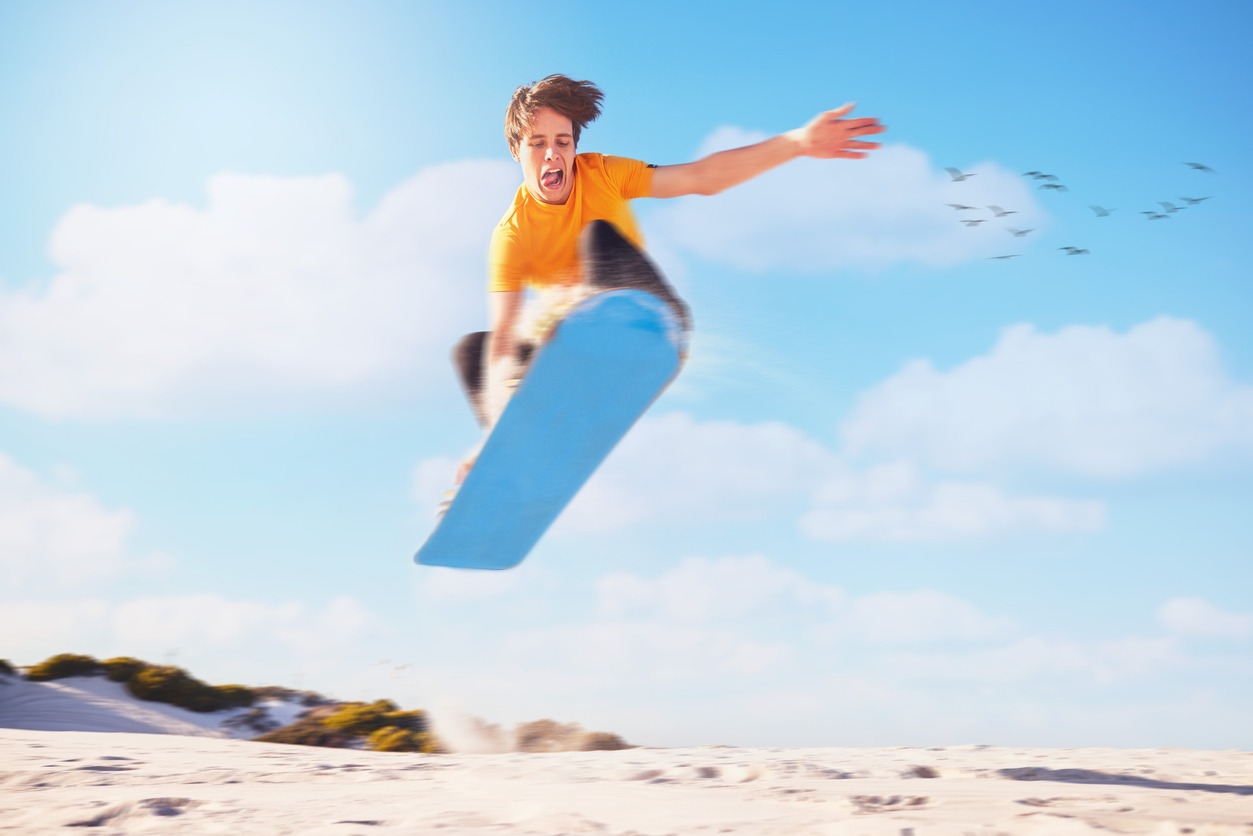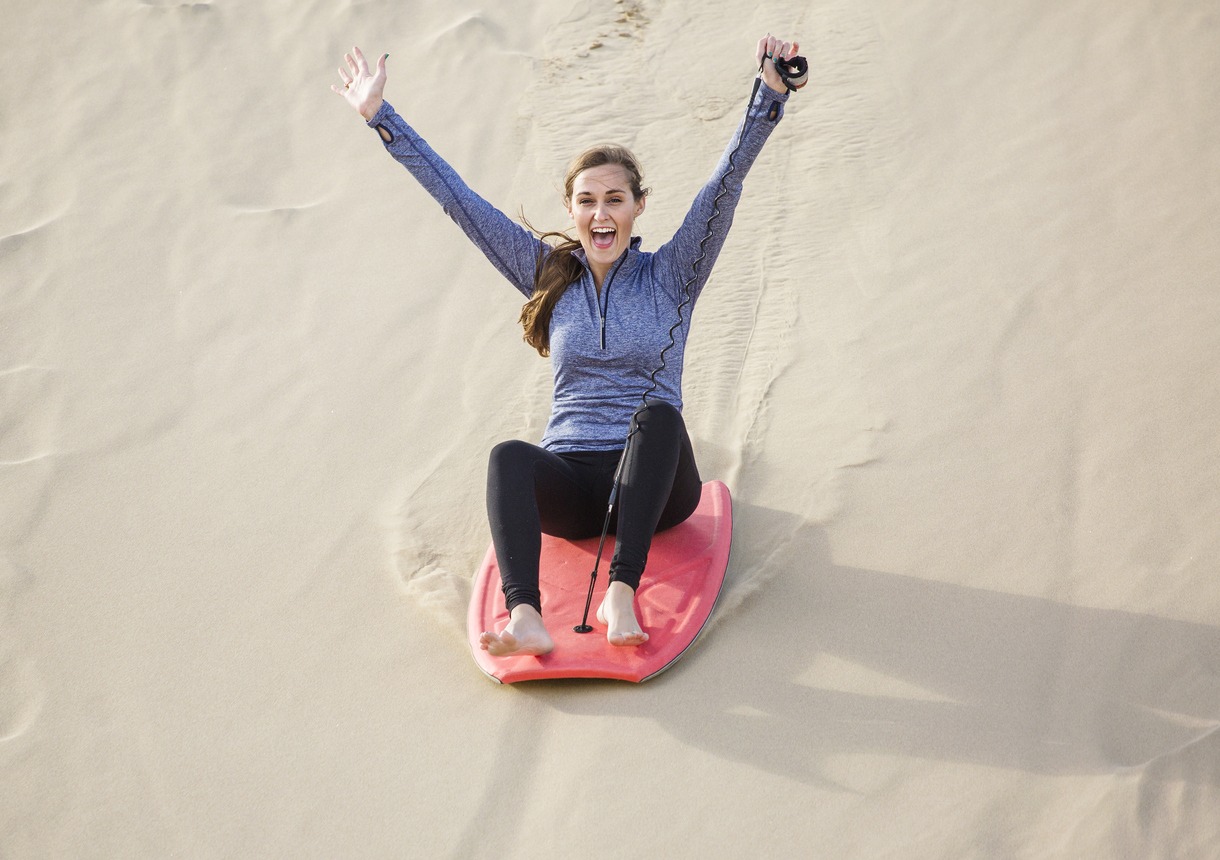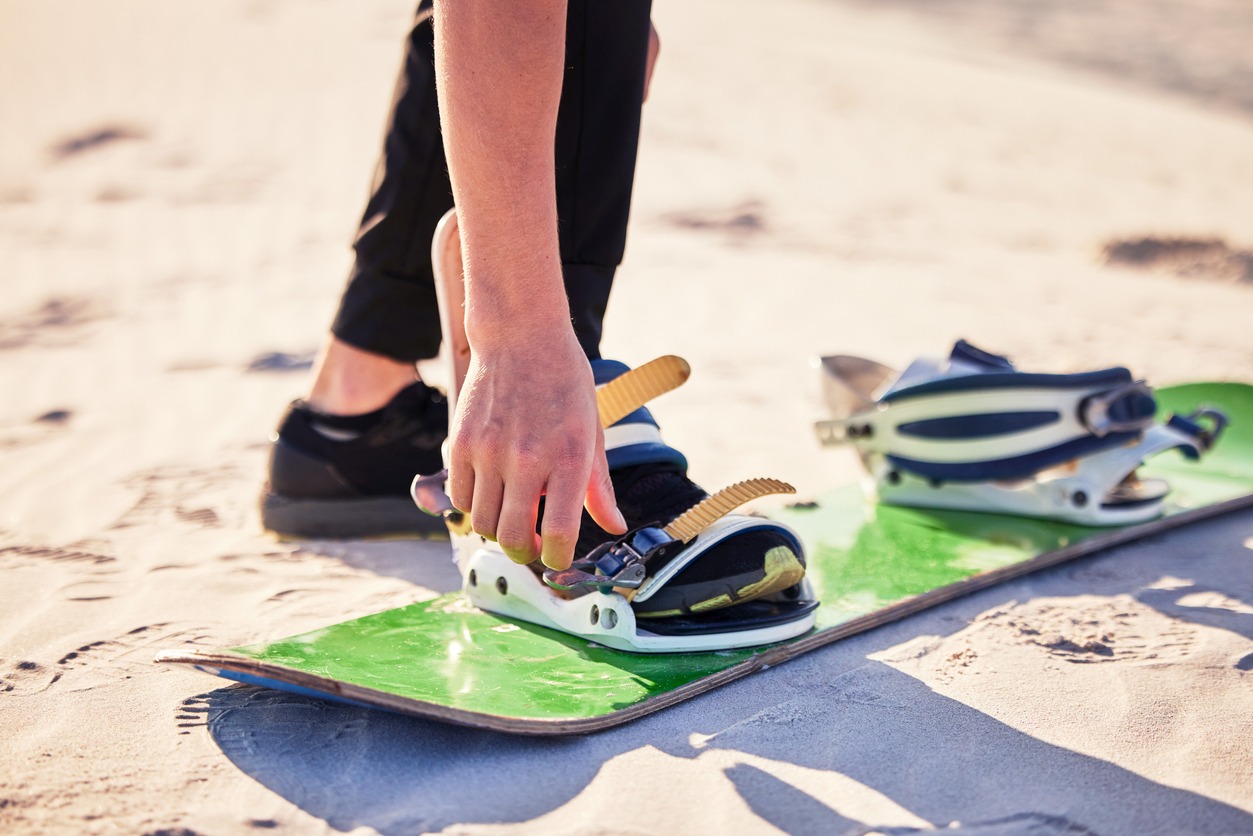Sandboarding has its roots in ancient civilizations, with evidence of people using wooden planks to slide down sand dunes in places like Egypt thousands of years ago. Over time, the activity spread to different desert regions across the globe, including Africa, Australia, and the Middle East. In the 20th century, sandboarding started gaining recognition as a recreational sport, with advancements in board design and the development of dedicated sandboarding equipment.
So, what exactly is sandboarding? In its simplest form, it involves sliding down sandy hills on a specially designed board, much like snowboarding on mountains of sand. While it may not have the icy allure of snow, sandboarding offers a unique and exciting experience that has captivated adventurers around the world.
Essential Equipment for Sandboarding:
One of the reasons sandboarding is so enjoyable is its accessibility. Unlike other extreme sports that demand pricey gear, sandboarding can be pursued with minimal investment.
The primary equipment needed for sandboarding is a sandboard. Look for a sandboard with a durable base, suitable bindings, and flexibility that allows for easy maneuvering on sand. Consider renting or borrowing one initially to test different styles and sizes before investing in your own. Also, a sandboarding boots are recommended to provide ankle support and protection while navigating the dunes. Look for boots with excellent traction on sand, as they will help you maintain stability and control. Prioritize comfort, especially during longer periods of use. Last but not the least is a safety gear. Make safety your top priority. Always wear a helmet to protect your head from potential falls or collisions. Additionally, wear knee and elbow pads to provide extra protection during tricks and maneuvers.
Types of Sandboards:
Knowing the different types of sandboarding allows you to choose the right equipment for specific sand conditions, ensuring optimal performance and a safer, more enjoyable sandboarding experience.
Wooden Boards (Soft Sands)
Firstly, wooden boards are buoyant, meaning they naturally float on top of loose sand. This buoyancy prevents excessive sinking, allowing you to glide smoothly over the surface without getting stuck. As a result, you can maintain momentum and enjoy a more enjoyable and effortless ride.
Additionally, the flexibility of wooden boards is beneficial on soft, shifting dunes. The board’s flexibility enables it to conform to the contours of the sand, providing better control and maneuverability. This allows you to navigate through the dunes with greater ease and precision, making turns and adjustments as needed.
Plastic Boards (Hard-Packed Surfaces)
Beginners should know the advantages of plastic sandboards as they are well-suited for hard-packed surfaces. These boards offer two essential benefits: speed and stability. Thanks to their smooth base, plastic sandboards reduce friction, enabling riders to reach faster speeds and enjoy an exhilarating glide on compacted sand. Moreover, their high durability makes them resistant to damage from rough surfaces, ensuring they can handle harder sand conditions with confidence.
Hybrid Boards (Versatile Performance)
Hybrid sandboards is crucial as they provide a well-rounded combination of wooden and plastic boards, making them adaptable to various sand conditions. These boards feature a blend of wood and plastic materials, offering the advantages of both buoyancy and speed. Designed to tackle different terrains, from soft sands to hard-packed surfaces, hybrid sandboards ensure optimal performance in diverse environments. This versatility makes them an excellent choice for riders seeking all-around capability and the ability to enjoy sandboarding across a wide range of settings. Remember, choosing the right board for specific sand conditions ensures an enhanced sandboarding experience. Consider the characteristics and advantages of each type to match the board’s features with the type of sand you’ll be riding on, ultimately maximizing your performance and enjoyment on the dunes.
Optional Equipment for Enhanced Performance
For those seeking an extra edge, optional equipment can enhance your sandboarding experience. From improving speed and maneuverability to ensuring safety and convenience, these optional gear items will elevate your sandboarding experience.
1. Wax: Glide with Speed and Control
Applying wax to the base of your sandboard is a game-changer. By reducing friction between the board and the sand, wax enhances your speed and maneuverability. It creates a smooth, slippery surface that allows your board to effortlessly glide on the sand. Choose the right wax for the sand conditions and temperature to optimize your performance.
2. Leash: Keep Your Board Close and Secure
A leash is a vital accessory that connects you to your sandboard. By attaching it to your wrist or ankle, you can prevent the board from getting lost or causing accidents when dismounted. Choose between handle leashes, held in your hand, or waist leashes, attached to your waist or belt, for easy and secure board control.
3. Goggles or Sunglasses: Protect Your Eyes, Enhance Your Vision
Sandboarding involves exposure to blowing sand and bright sunlight, making eye protection crucial. Wearing goggles or sunglasses with UV protection not only shields your eyes from irritation but also enhances visibility. These eyewear options will allow you to fully enjoy the breathtaking views while keeping your eyes safe from harmful elements.
4. Bindings: Stability and Control for Seamless Rides
Bindings are the components that secure your feet to the sandboard, providing stability and control. Strap-on bindings offer flexibility and easy adjustments, allowing you to find your perfect fit. Hard-shell bindings, with their rigid structure, deliver maximum support and responsiveness, ensuring a seamless and controlled ride.
5. Board Bags: Protect and Transport Your Gear
Board bags are designed to store and transport your sandboard safely. They shield your board from scratches, dings, and other damage when not in use. These bags also make it convenient to carry your equipment, ensuring that your sandboard remains in top condition for your next thrilling ride.
6. Sandboard Racks: Organize and Preserve Your Boards
Sandboard racks are storage systems that keep your boards organized and protected. By keeping them off the ground, these racks safeguard your boards from damage. They save space and make it easy to access your equipment whenever you’re ready for another thrilling sandboarding excursion.
Conclusion:
By equipping yourself with the right gear, including wax, leashes, goggles, protective gear, board bags, and sandboard racks, you’ll enhance your performance, protect yourself from potential harm, and ensure the durability and organization of your equipment. Embrace the thrills of sandboarding, make unforgettable memories, and enjoy the breathtaking beauty of the magnificent sand dunes!




